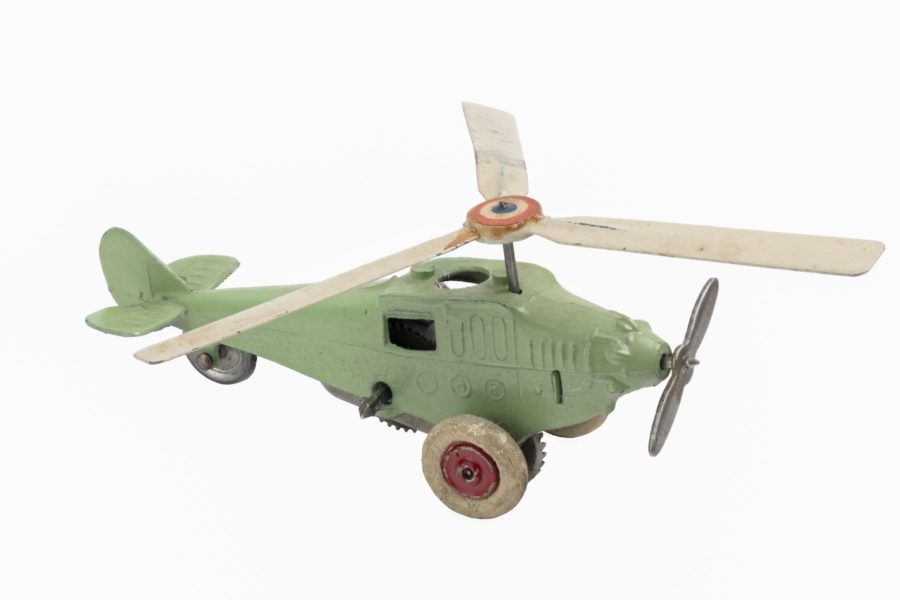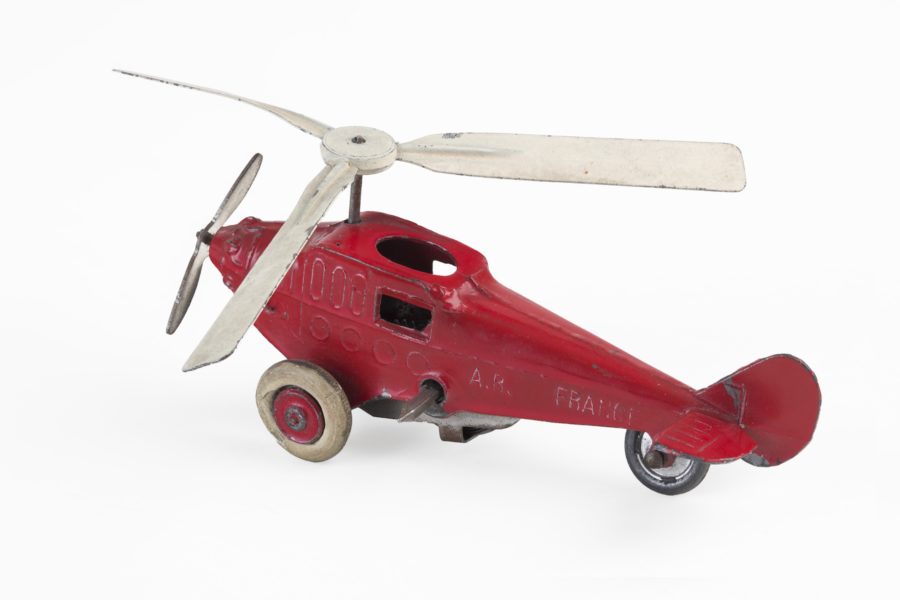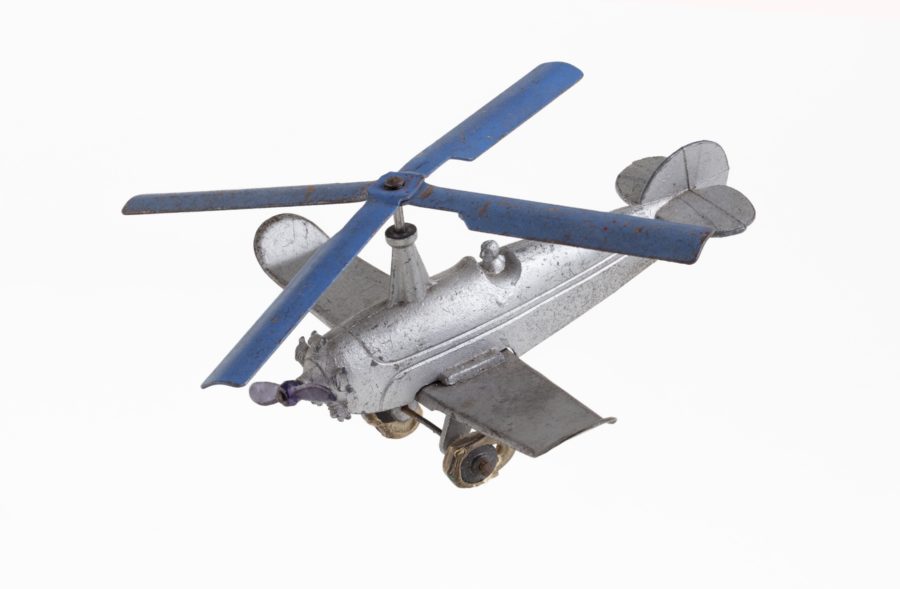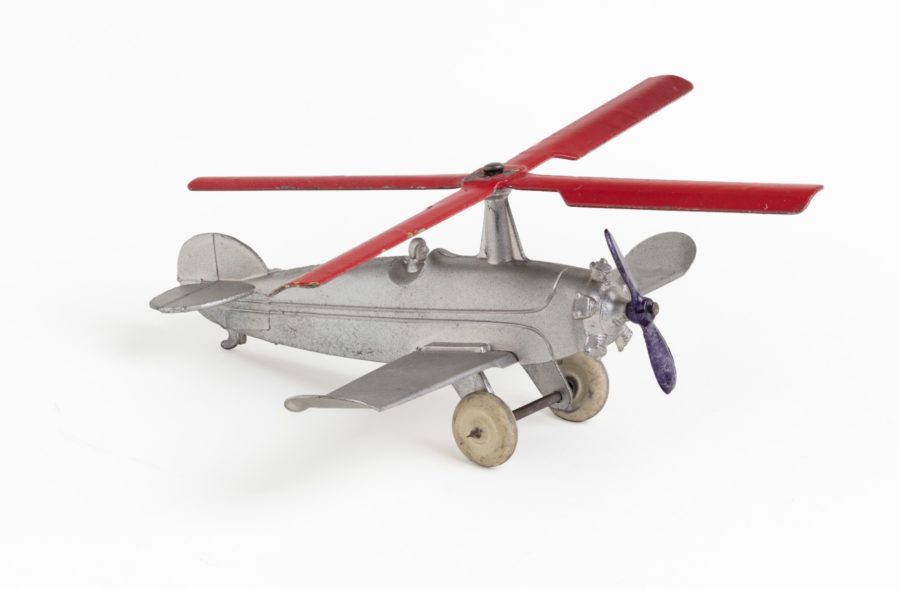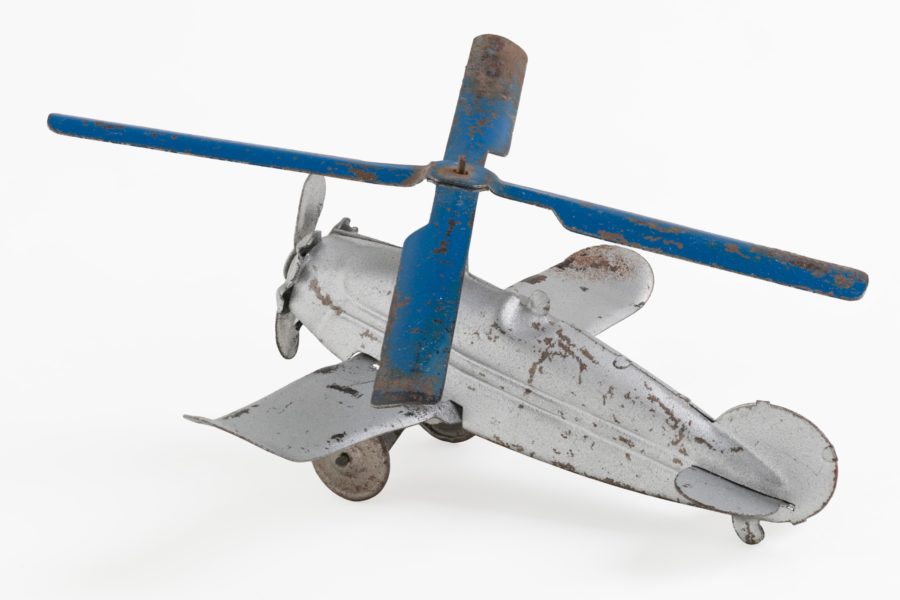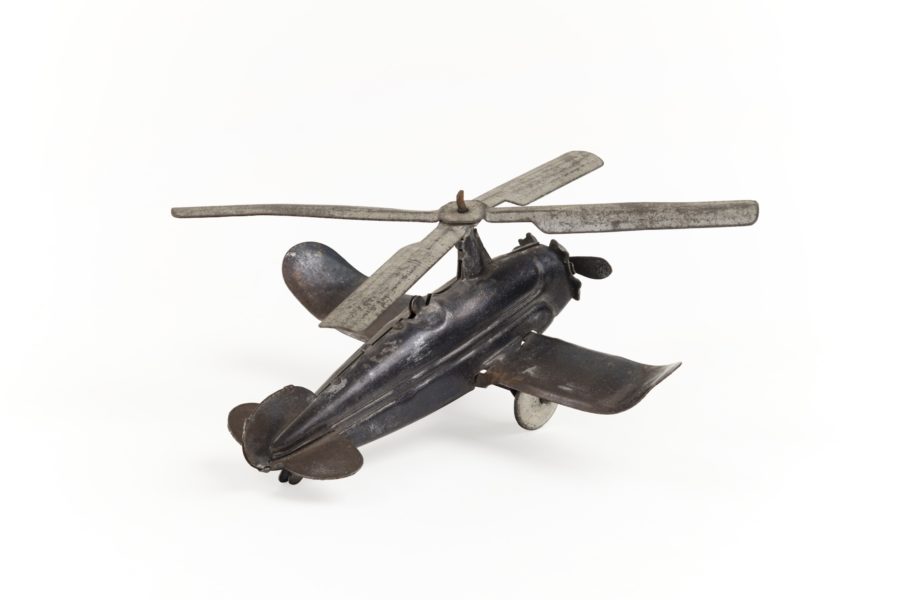I
We have Juan de la Cierva y Cordoníu (Murcia, 1895- Cr0ydon, 1936) to thank for the autogyro, which he invented in 1923. He constantly improved his device; in 1928, on board the C.8L-II, he flew from Croydon to Le Bourget in 52 minutes, 20 of which were over the English Channel.
The C.19 model had small wings, but it was his C.30 model, the most advanced, that was to be built under licence in England, France and Germany.
Various models of this flying machine appealed to toy manufacturers.
C.19
Rico. Spain
In the interests of economy, Rico fits an existing plane with a small rotor. It’s a long way from a gyroplane, but the children don’t care as long as the colours are bright.
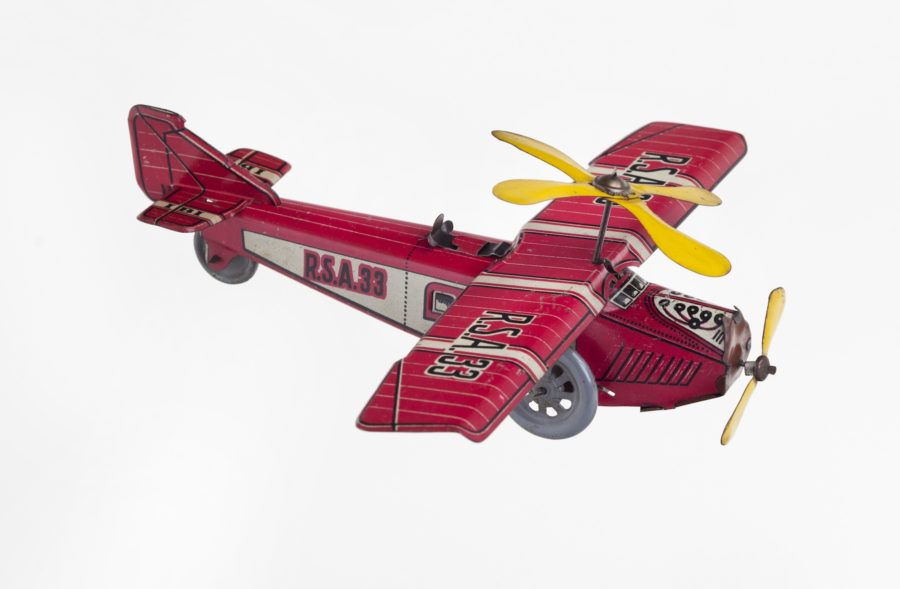
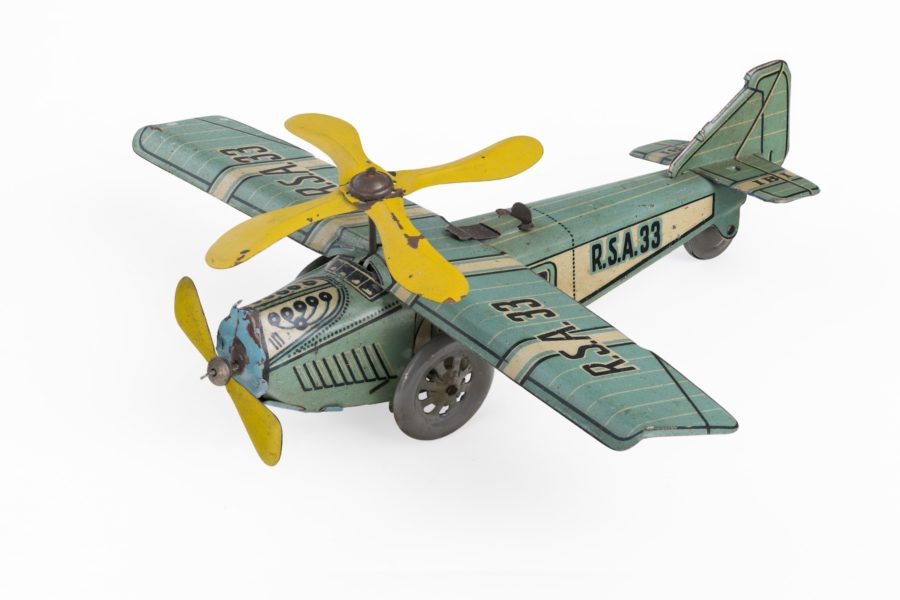
C.30
In Spain
Carrasco y Viuda e Hijos de Marsal
A large toy that is very close to reality
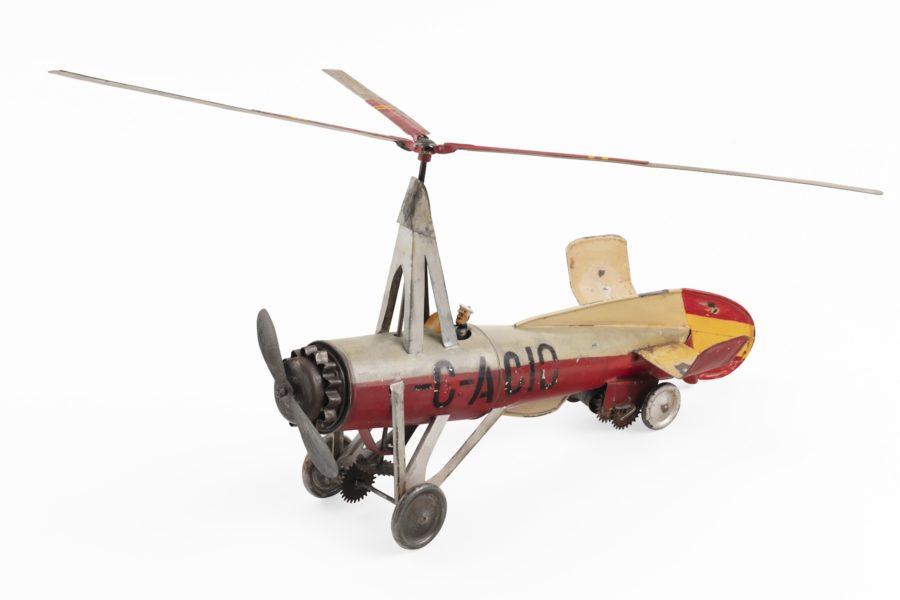
Paya
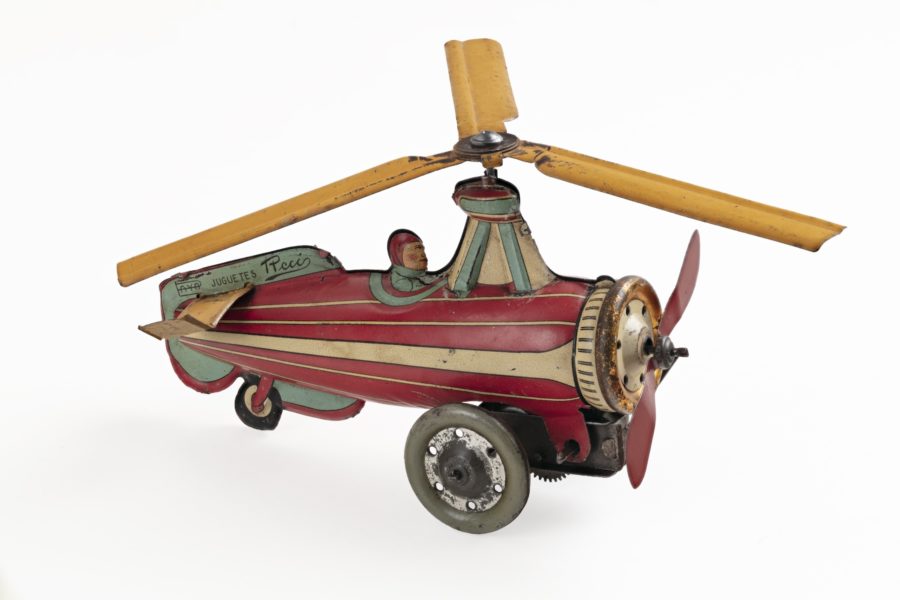
Britains, Grest-Britain
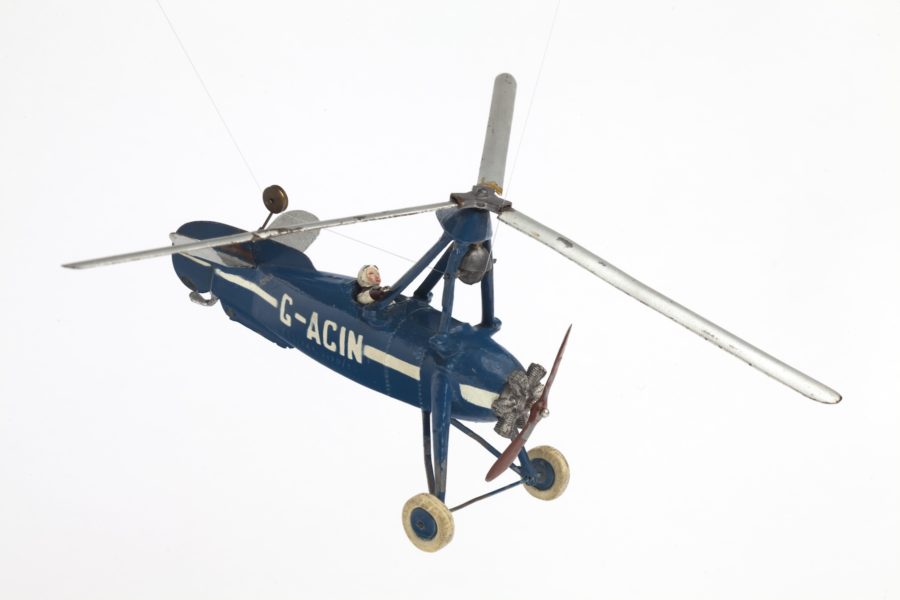
The gyroplane registered as G-ACIN was used by the London police.
Einfalt, Germany
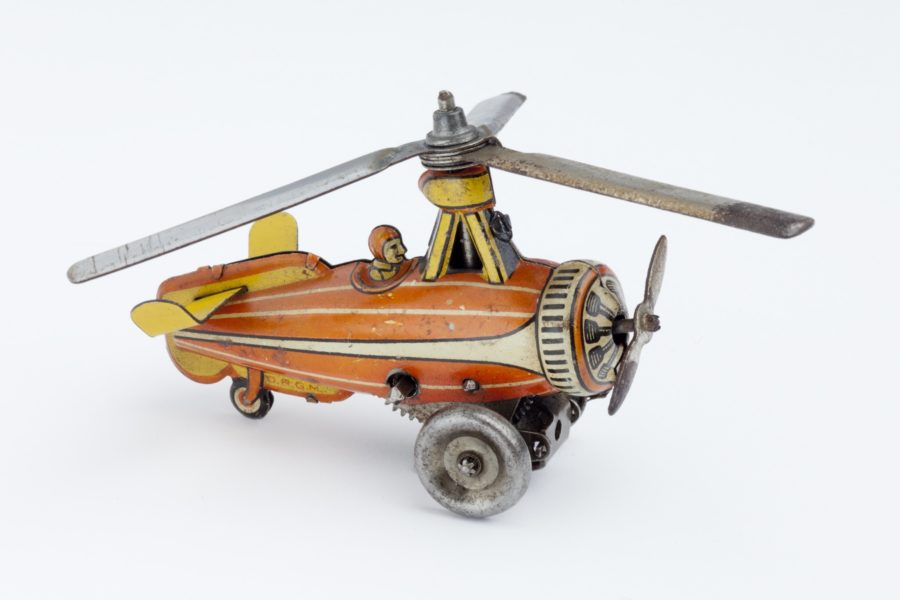
Autajon & Roustan, France
A whimsical interpretation
In Japan
Kuramochi

Cierva Avro 617 belonging to Arthur Ernest Guinness, registered G-ACUI on 12-06.1934
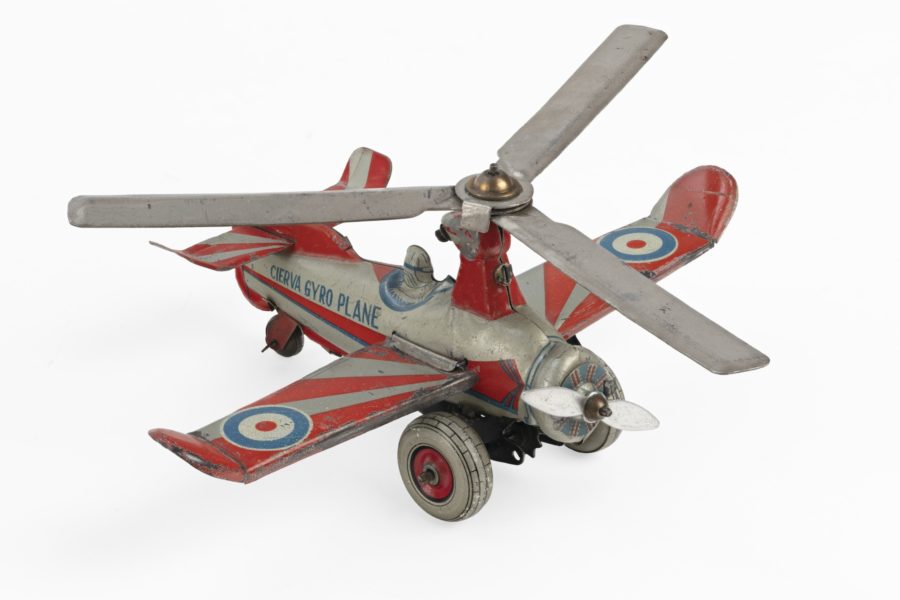
Another interpretation of the Cierva Avro 617 with the british cockades
Manufacturer unknown, Japan
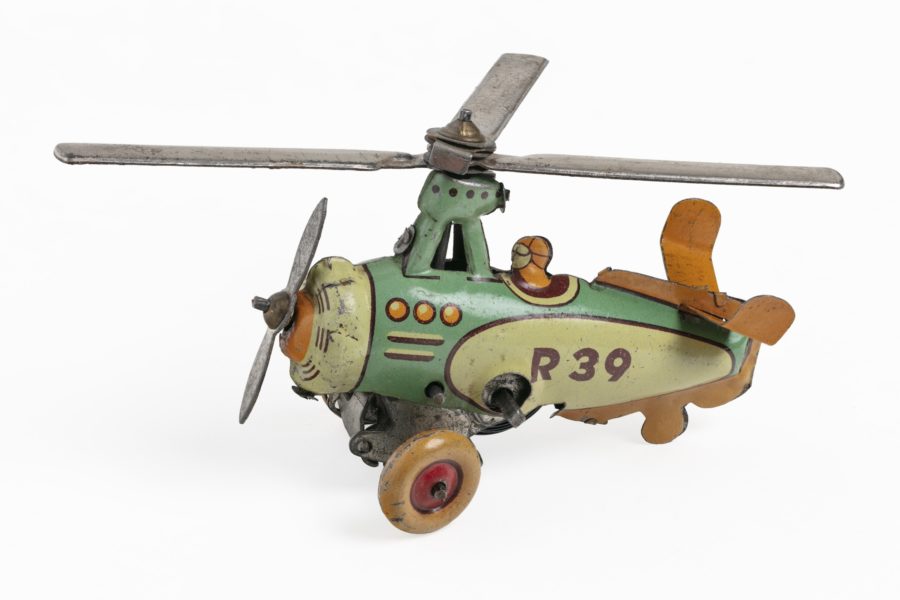
II
In the United States, the gyroplane underwent particular development thanks to the efforts of Harold Pitcairn, manufacturer of biplanes for mail transport and founder of Eastern Airlines. In 1930, he dismantled his biplane construction companies to devote himself to the production of an American autogyro, acquiring the patent rights of La Cierva for the United States. His first models, PCA-1, PCA-1A and B, feature numerous innovations that La Cierva incorporated into the C.19.
The 1929 crisis slowed the sale of civilian aircraft.
The PCA-2 and the PA-34 (PCA-2 without wings) were tested by the US Navy.
From the end of 1941, the Air Force, which had backed the helicopter, put pressure on Congress and obtained free access to the patents linked to this technology, which marked the end of the autogyro in the United States.
Some great feats remain, such as the altitude record of 5615 m, set by Amelia Earhart on board a PCA-2 on 8 April 1931; as a result, Pitcairn autogyros did not escape the attention of toy manufacturers.
In United States
Hubley
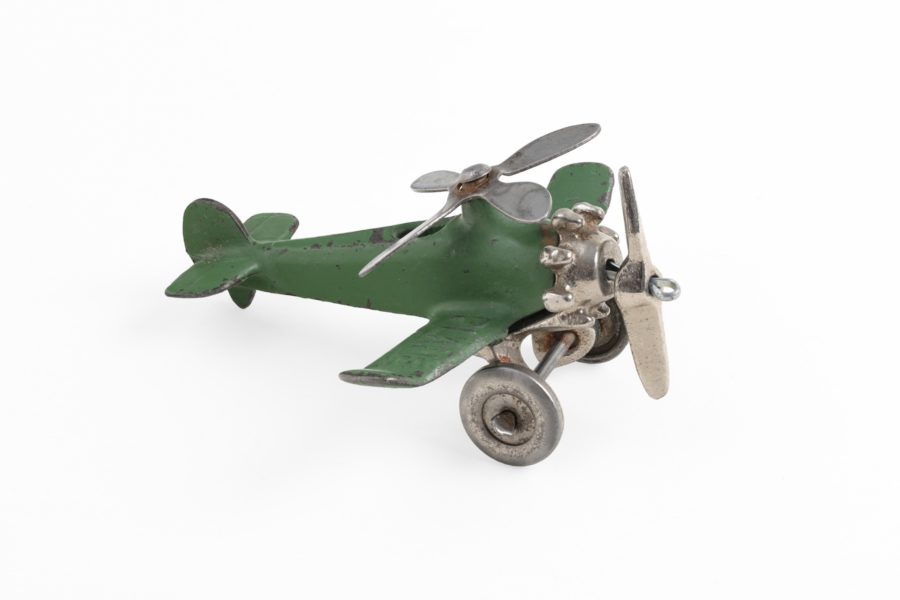
Tootsietoy
The toy descends by gravity along the wire, driving the base of the rotor which begins to rotate.
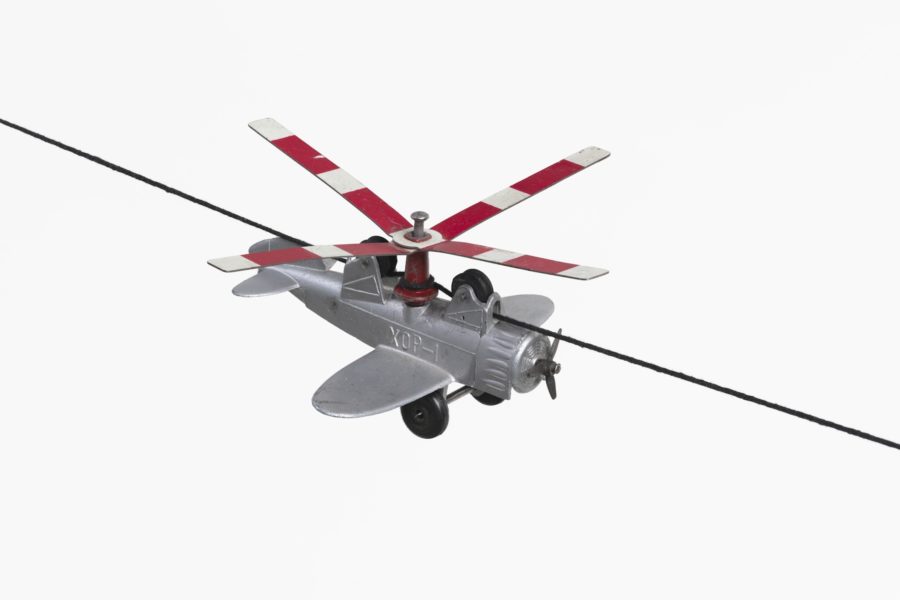
The toy slides by gravity on the wire, winding around the base of the rotor, which turns as it does so.
Wyandotte
A fanciful version, an existing twin-engine toy with one engine, economic necessity obliges.

Rico, Espagne
Kuramochi, Japan
A fine tribute to Harold Pitcairn
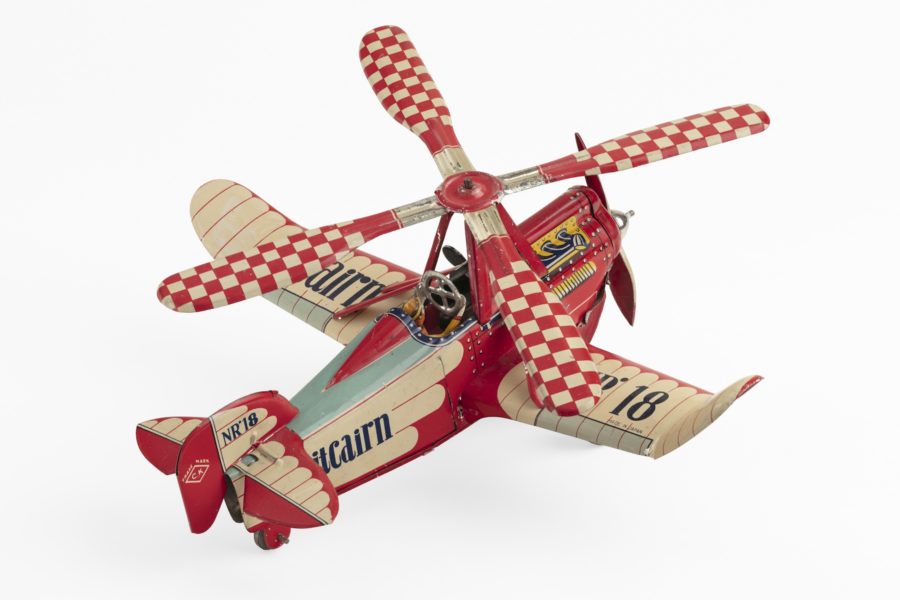
There are two versions of this toy, the first where the blade attachments are gold and the wing supports are metallic red.
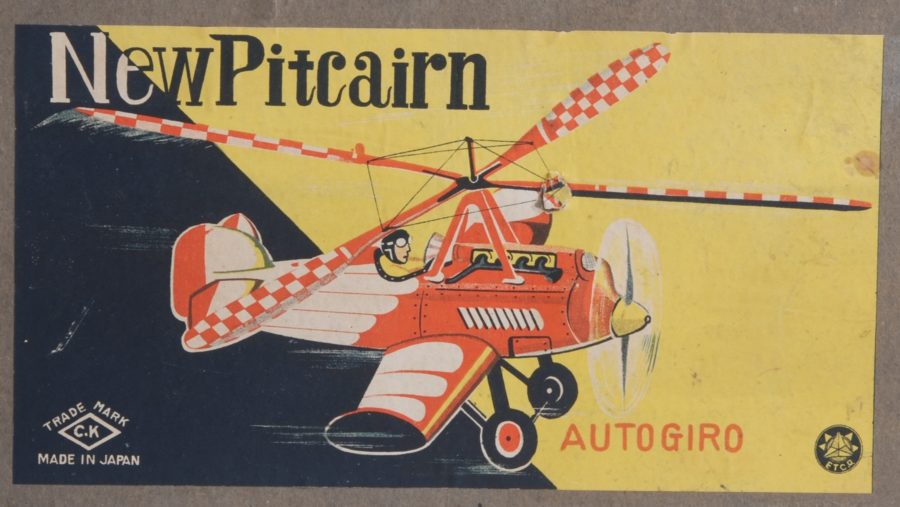
Box label
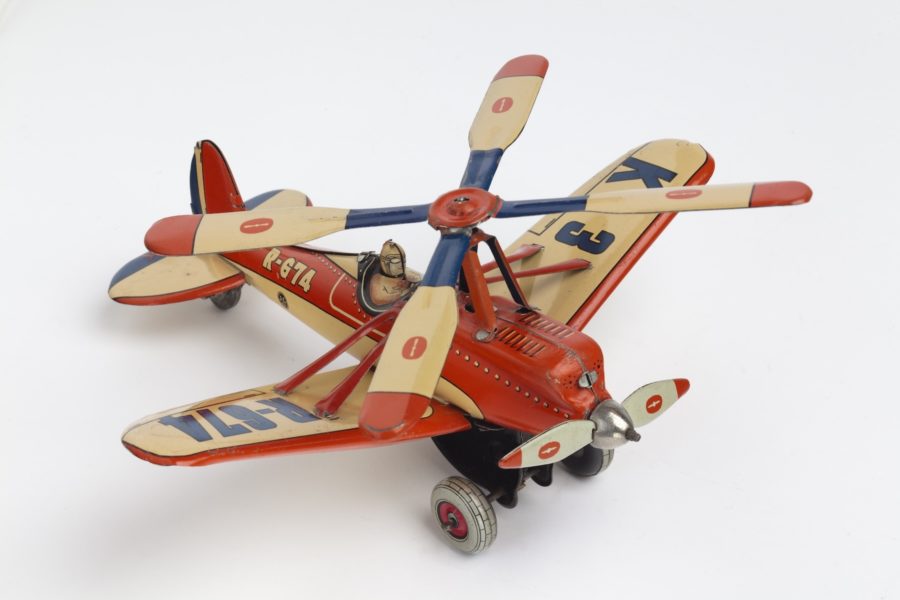
Immatriculation fantaisiste
From the dream of Icarus in Greek mythology to Leonardo da Vinci and his Codex, the Montgolfier brothers and Pilâtre de Rozier, Zeppelin, Ader, the Wright brothers and so many others who made aviation history, how many attempts, successful or unfortunate trials, research, inventions, courage did it take for man so that on 21 July 1969, Neil Armstrong could take a small step and make a giant leap for humanity; Harold Armstrong and Juan de la Cierva had unknowingly made their contribution.

